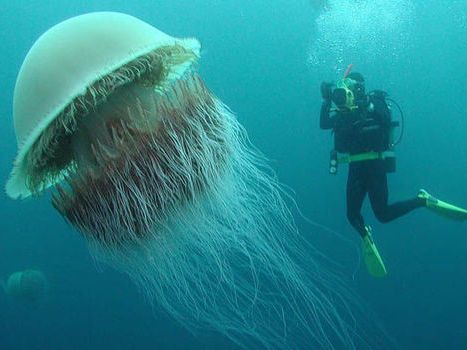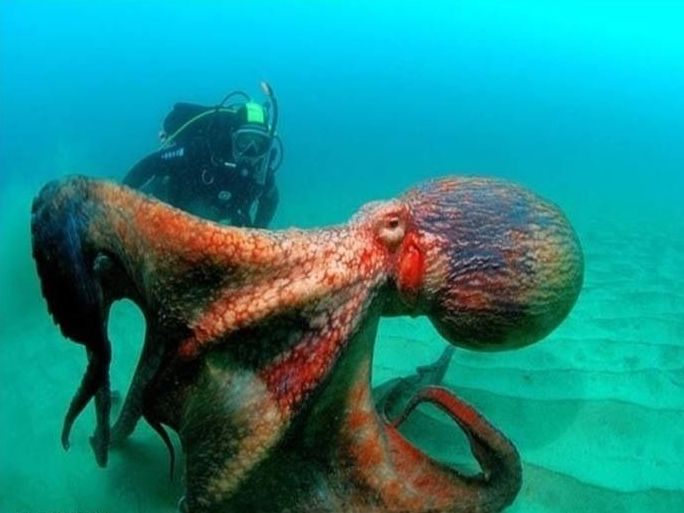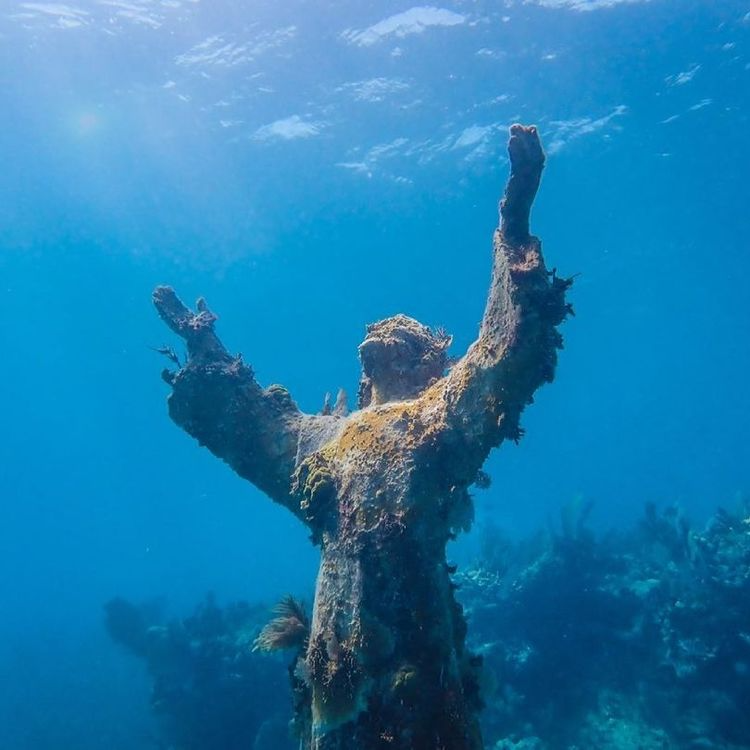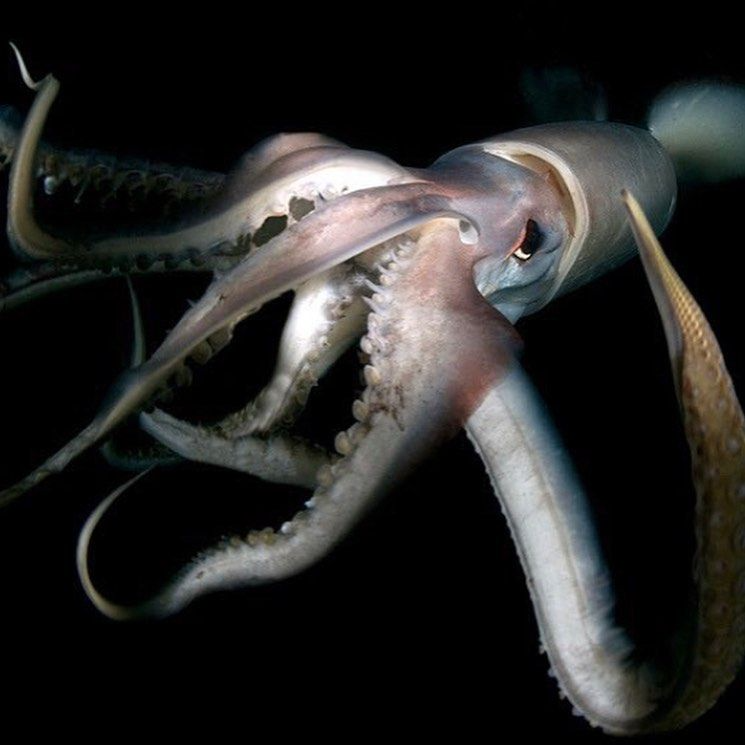
The ocean is terrifying for a few reasons: Firstly, its sheer vastness is a sobering reminder of how small we all are and just how little we know about the planet we call home. And secondly, well, just look at some images of some of the creatures that lurk in the darkest depths of the ocean for some nightmare fuel. From the hideous blobfish to the elusive giant squid, the ocean is home to a myriad of creepy and mysterious creatures that we humans know relatively little about! Now please enjoy the following terrifying ocean pics that might make you afraid to go swimming ever again!
Lion’s Mane Jellyfish

Named after its long “mane” of tentacles, the lion’s mane jellyfish is certainly a terrifying sight! On average, this jellyfish will grow to be about 1½ feet long, but if you think that’s massive, the world record had a seven-foot-long bell and 120 feet of tentacles! While the lion’s mane’s sting isn’t generally deadly to humans, it definitely does hurt, and can cause allergic reactions in some people.
A Very Close Call

One Redditor posted a video of himself in a small group of kayakers that came dangerously close to a pod of killer whales. A couple of them even go right under their kayaks! It’s a good thing they weren’t mistaken for seals, isn’t it?
Getting Schooled

This photo gives a whole new meaning to the saying, “there’s strength in numbers.” It’s a sobering reminder that while one of these fish alone can’t harm the diver, the whole group of them could practically swallow him whole!
Release the Kraken!

As the name would suggest, the giant Pacific octopus is the largest species of octopus in existence. They can grow to be 16 feet long, and the largest one ever found was a whopping 156 pounds! While these guys may look terrifying, they’re actually not dangerous to humans, and thanks to their high intellect, they’re even able to recognize certain people they come into contact with often. They enjoy a diet of shrimp, crabs, and snails.
Christ of the Abyss

Christ of the Abyss is an eerie bronze underwater statue created by Italian sculptor Guido Galletti. It was placed off the coast of Italy in the Mediterranean Sea in 1954 and is currently a popular (and haunting) tourist attraction for divers.
Megalodon Shark Jaw

This colossal jaw belongs to the megalodon shark, an extinct species that ruled the ocean millions of years ago. The megalodon is thought to have been one of the greatest predators to have ever existed on planet earth – and now let’s all take a moment to thank our lucky stars that these things no longer exist because the megalodon was also far bigger than its relative, the great white shark. Not much is known about the megalodon still, as scientists have only found fossil fragments, but it’s thought that on average they would grow to about 33 feet – which is almost twice as long as a great white!
Seaweed Monster Hiding in the Waves

Those may just be strands of seaweed beneath the waves, but they sure do look like the tentacles of a sea monster, just waiting for a surfer to come by. It’s enough to keep us from surfing out there, that’s for sure!
Humboldt Squid

The Humboldt squid is one creature you do not want to mess with. The predatory Humboldt has been known to attack fishermen and divers on many accounts, earning itself the nickname Diablo Rojo (red devil) among Mexican fishermen. Not to mention, they’re not small by any means; a fully grown adult can reach a mantle length of nearly five feet! Oh, and they typically travel in shoals of more than 1,000 squid and can travel up to 15 mph! Are you freaked out yet?
But if you think the Humboldt is a terrifying squid, just wait till you see what’s to come!
The Mighty Manta

The giant oceanic manta ray may look intimidating due to its size, but don’t be fooled as they’re actually about as gentle as can be, and are sometimes even curious when encountering humans. They can grow to a disc size of 23 feet across, and weigh up to 6,600 pounds! Due to their size, they have very few natural predators, so they can typically go about their lives gliding through the ocean, eating shrimp, krill, and planktonic crabs.
Leave a Reply